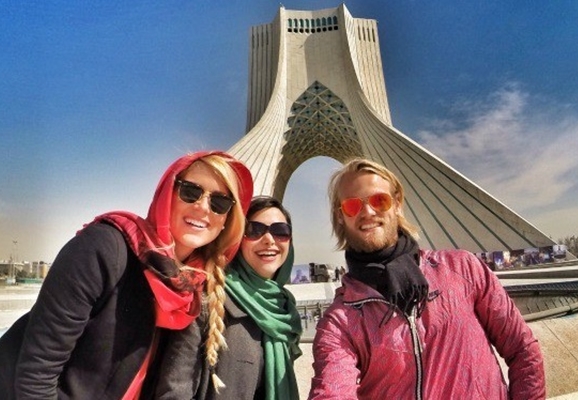Speaking in a Saturday ceremony, Mounesan referred to tourism industry as the third largest industry in the world and said tourism creates social vitality along with new jobs and benefits.
He downplayed the impact of sanctions on Iran’s tourism industry and said due to its immunity to sanctions, the industry can play an important role in the country’s economic growth.
A new report on global security portrayed Iran as safe as much of western Europe for travellers in what could be an evidence that the country’s tourism industry has a good potential to provide a serious source of revenues in face of draconian US sanctions.
The 2019 Travel Risk Map prepared, launched by global risk experts International SOS in collaboration with Control Risks, shows the danger level in each country and territory based on the current threat posed to travelers by political violence (including terrorism, insurgency, politically motivated unrest and war), social unrest (including sectarian, communal and ethnic violence) and violent and petty crime.
Factors such as the robustness of the transport infrastructure, the state of industrial relations, the effectiveness of the security and emergency services and the country’s susceptibility to natural disasters are also taken into consideration, according to a report by The Independent.
The map lists five categories of risk: insignificant, low, medium, high and extreme.
Iran is among the world’s top potential tourist destinations with a variety of ancient sites, including 17 places listed by the UNESCO.
Iranian officials have said they wanted to annually attract 20 million tourists by 2025 in order to generate $30 billion of revenues as the country seeks to wean itself off the oil money.
Official figures earlier released showed that over six million tourists had traveled to Iran over a period of six months starting March 2018. This was higher than the same period last year by above 50 percent.
The World Travel and Tourism Council (WTTC) recently said tourism contributed a total of $30.7 billion to Iran’s gross domestic product (GDP) in 2017. The WTTC added that Iran’s global ranking in terms of contribution of tourism revenues to the economy stood at 35 out of 185 countries.
Apart from Iran, the only other countries in the region with the least security risks have been identified as Bahrain, Kuwait and Qatar. Other “low risk” regional countries are Jordan, Oman, Qatar, the UAE, Georgia, Azerbaijan, Armenia and Uzbekistan
The security for travelers in Turkmenistan and Saudi Arabia has been described as “average”. However, other countries in the region including Pakistan, Iraq and Afghanistan have been described as “dangerous”.
“Extreme” risk countries are almost exclusively in Africa and the Middle East, including Syria, Yemen, Libya, South Sudan and Somalia.
Very few countries manage to make it into the “insignificant” bracket; in Europe, only Luxembourg, Denmark, Slovenia, Switzerland, Norway, Finland, Iceland and Greenland are put in this category, The Independent added in its report. Canada, the US, Australia and New Zealand are all low risk too.
